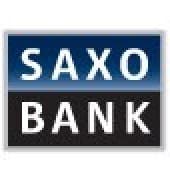- Falling unemployment in the US points to a strengthening economy
- The Federal Reserve may raise interest rates sooner if growth picks up
- There are stark differences between the vacillating ECB and the decisive Fed
By Stephen Pope
The final quarter of 2014 got underway last week and offered a contrasting perspective between the two largest economic blocs. In the US on Friday, October 3, the unemployment rate declined for September came in at just 5.9%, down from 6.1% August. This marks a six year low. The Bureau of Labor Statistics also reported that the Non-Farm Payroll reading jumped to 248,000, which was ahead of the street’s estimate of 215,000 and above the 12 month average of 217,000.
The positive news did not stop there; in addition the readings for July and August were both revised higher.
Chart: Bureau of Labor Statistics and Eurostat
Key factor
Employment numbers are rightly seen as a crucial gauge as to the health of the economy and the impressive trend in US joblessness has been a key reason as to why the debate over when the Fed will raise the Fed Funds Rate has become louder. The Fed stimulus programme, known as "quantitative easing" (QE) is on schedule to draw to an end this month. The Fed has indicated it will raise short term interest rates if the economy continues to grow. Board of governors chair Janet Yellen has certainly not indicated a firm date when the first rate rise will occur; all we know is that the Fed has said the move will come a "considerable time" after the stimulus programme ends. Naturally the US dollar has been moving higher on mounting speculation that Yellen may elect to pull the rate rise trigger sooner than has generally been expected. The reason for this being that Yellen has said there is a limited amount of economic slack if the unemployment rate falls below 6.0%. That is precisely what happened last Friday.
Bleak Eurozone outlook
What a contrast the situation in the US is with that in the Eurozone where the purchasing managers index (PMI) fell to 52 in September, down from an initial estimate of 52.3. As the chart above that captured unemployment rates shows, whilst the US rate heads lower, that of the Eurozone is flatlining at 11.5 percent. Few new jobs are being created when there is little confidence in the single currency region. The European Central Bank press conference on Thursday, October 2 was far from cheerful. President Mario Draghi carried about him the air of an angry or frustrated man. Reading between the lines there appeared to be the hint that the governing council’s meeting had been difficult, as he appeared unable or at best unwilling to shed any more light on the current raft of proposed policy. All we had was another plea to elected national politicians to do more to reform their economies and to trot out the mantra that the ECB has more policy ammunition to use if required. Well, we have been told repeatedly that there is no more tarmac on the road of rate reduction.
What of the measures that the ECB has already put in place? The tack up of Targeted Long Term Refinancing Operations (TLTRO) has fallen short of the desired level and the efficacy of buying Asset-Backed Securities is highly questionable as the plan seems to be restricted to acquiring assets from banks rather than non-bank financials. Crowding in on the room the ECB has for manoeuvre is that fact that the European Court of Justice is to pass judgment on the legality of the Outright Monetay Transactions (OMT) programme. However, that unlikely to happen for at least another six to nine months. So does that imply that even if the ECB were to opt for full scale QE by acquiring sovereign securities it would happen until the second half of 2015 at the earliest.
With the current torpor that shrouds the economy of the single currency region it is no wonder the currency is sinking like a lead weight in the ocean. The contrast in the decisive action of the US in 2008 with the Eurozone, which is still conducting a third bank stress test, is as stark as night and day.Alphabet soup policy mix
There are fears that the current concoction of measures the ECB is offering up as an alphabet soup policy mix – ABS, LTRO, TLTRO, OMT, and QE – may prove to be ineffective. If France and/or Italy continue to drag their feet and prove themselves incapable of rejuvenating their domestic economies, then pronouncements that the euro is here to stay could yet prove just a hollow promise. The real concern I have is that peripheral sovereign debt in the Eurozone will start to weaken as the anti-euro, anti-austerity parties make further gains, and in response the incumbent governments allow fiscal policy to become lax. That suggests that the debt crisis is more than likely to flare up once again. At that moment, the only way to keep all members inside the club and to save to single currency may be in finally allowing full scale ECB intervention. We may not be so very far away from the watershed moment when Europe has to search its soul and ask if the Euro is really worth fighting for. If so the ECB has to be let of the leash as against being hobbled by the limitations of its charter.
In short, the style of policy has to bridge the Atlantic as the Eurozone and its institutions have to become more fleet of foot, more single minded and more willing to grasp the nettle as the Americans did in 2008-09 as against the continual denial of the need for increasingly exigent policy.
